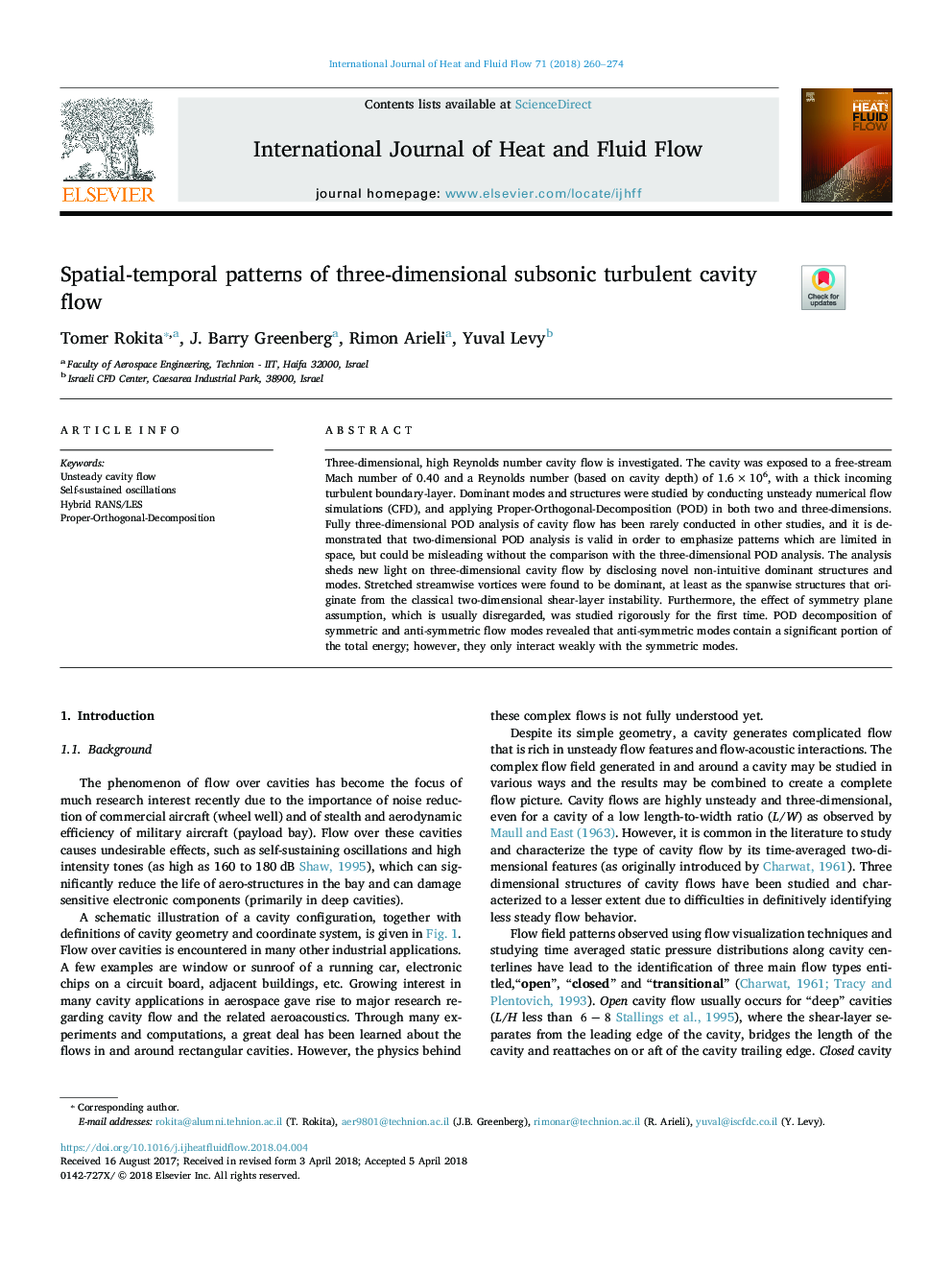| Article ID | Journal | Published Year | Pages | File Type |
|---|---|---|---|---|
| 7053462 | International Journal of Heat and Fluid Flow | 2018 | 15 Pages |
Abstract
Three-dimensional, high Reynolds number cavity flow is investigated. The cavity was exposed to a free-stream Mach number of 0.40 and a Reynolds number (based on cavity depth) of 1.6â¯Ãâ¯106, with a thick incoming turbulent boundary-layer. Dominant modes and structures were studied by conducting unsteady numerical flow simulations (CFD), and applying Proper-Orthogonal-Decomposition (POD) in both two and three-dimensions. Fully three-dimensional POD analysis of cavity flow has been rarely conducted in other studies, and it is demonstrated that two-dimensional POD analysis is valid in order to emphasize patterns which are limited in space, but could be misleading without the comparison with the three-dimensional POD analysis. The analysis sheds new light on three-dimensional cavity flow by disclosing novel non-intuitive dominant structures and modes. Stretched streamwise vortices were found to be dominant, at least as the spanwise structures that originate from the classical two-dimensional shear-layer instability. Furthermore, the effect of symmetry plane assumption, which is usually disregarded, was studied rigorously for the first time. POD decomposition of symmetric and anti-symmetric flow modes revealed that anti-symmetric modes contain a significant portion of the total energy; however, they only interact weakly with the symmetric modes.
Related Topics
Physical Sciences and Engineering
Chemical Engineering
Fluid Flow and Transfer Processes
Authors
Tomer Rokita, J. Barry Greenberg, Rimon Arieli, Yuval Levy,
